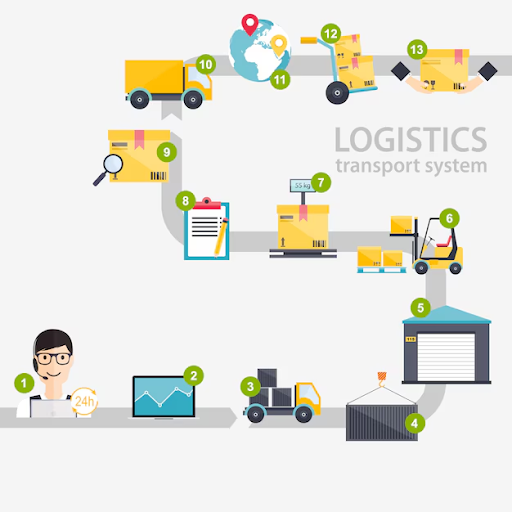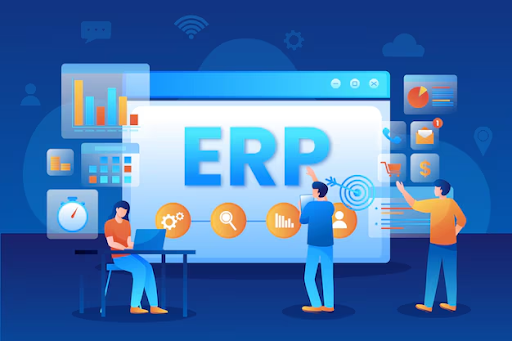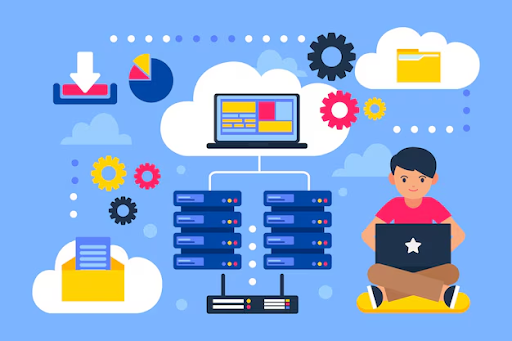ERP is an integrated software system that encompasses various functions of a business, including accounting, finance, human resources, production, and supply chain. When used to manage transportation, ERP can help businesses track and monitor transportation activities, manage inventory, optimize routes and delivery schedules, and minimize transportation costs
In this article, we will discuss the benefits of using ERP to manage transportation risks. We will also examine some real-world use cases of ERP in managing shipping risks.
1. Classifying transportation risks

The process of transporting goods always carries many risks that can affect the quality of the goods, delivery schedule, and the company's reputation. To proactively prevent and respond effectively, we need to clearly classify these types of risks. Based on the origin and causative factors, transportation risks can be divided into two main categories:
1.1 Internal risks (Risks from within the enterprise)
These are risks arising from within the enterprise, often related to management factors, work processes, and the enterprise's resources.
- Process risks:
The transportation planning is not accurate: Lack of information about the route, vehicles, delivery time...
The packaging process is not secure: Goods are prone to damage during transportation.
Customs procedures are cumbersome and delayed.
- Resource risks:
Lack of transportation means or transportation means that do not meet quality standards.
Employees lack experience and operational skills.
The warehouse management system is not yet effective.
- Management risk
Lack of coordination between departments in the enterprise.
There is no contingency plan in case of an incident.
1.2. External risks (Risks from outside the enterprise)
These are risks arising from external factors to the business, often beyond the direct control of the business.
- Natural risks:
Natural disasters: Storms, floods, earthquakes, droughts... affecting the transportation process.
Bad weather: Rain, fog, heat... reduces transportation efficiency.
- Social risks
Protests, riots, terrorism... causing traffic disruptions.
Policy changes: Changes in taxes, customs regulations... affecting transportation costs.
- Market risk
Intense competition: Competitors offer transportation services with better prices and quality.
Global logistics incidents: Supply chain disruptions, container shortages... affecting cargo transportation.
2. Assess the impact level of each type of risk on the business.

2. 1. Internal risks
Affecting the reputation and image of the business:
- Goods damaged or lost: When goods reach customers without ensuring quality, this will reduce customer trust and affect the company's reputation.
- Goods damaged during transportation: Delayed delivery: Late delivery will make customers dissatisfied, leading to negative reviews on social media platforms and reducing the likelihood of customers returning.
Impact on finances:
- Increased costs: The costs for repairing, replacing damaged goods, and additional expenses due to delayed deliveries... will significantly increase the operating costs of the business.
- Loss of revenue: Customers cancel orders, do not make payments, or request refunds, which will reduce the company's revenue.
- Affecting business operations: Supply chain disruption: Issues arising during the transportation process can disrupt the supply chain, impacting production and business.
- Loss of customers: Customers may switch to other suppliers with better transportation services.
2.2 External risks
- Impact on finances:
Increased costs: Insurance costs, costs for renting replacement vehicles, storage costs... will significantly rise when external risks occur.
Loss of assets: Goods stolen or damaged due to natural disasters will cause property damage to the business.
- Impact on business operations:
Production disruption: When the supply of raw materials is interrupted due to natural disasters or other unexpected events, production will be halted.
Loss of market: If unable to meet customer demand due to external risks, the business may lose market share to competitors.
- Affecting reputation:
The company's image is affected: Incidents related to external risks, especially those causing environmental pollution, can severely impact the company's image.
3. The role of ERP software in risk management

Monitoring and supervising the transportation process
ERP integrates with GPS devices to provide detailed information about the location of goods throughout the entire journey. This helps businesses track delivery progress, identify stopping points, and detect any delays. The system will automatically send alerts when any incidents occur, such as delayed deliveries, route changes, or damaged goods.
Effective warehouse management
ERP helps track and manage all assets related to the transportation process, including trucks, containers, and other equipment. By tracking the maintenance schedules and technical conditions of the vehicles, businesses can minimize the risk of damage and malfunctions during transportation.
Risk management related to goods
ERP helps accurately track the quantity and type of goods in each shipment. This helps minimize the risk of loss and damage to goods during transportation. For perishable goods, ERP can integrate with temperature sensors to monitor the temperature throughout the transportation process, ensuring that the goods are always stored under appropriate conditions.
Automating processes
ERP helps establish a set of standardized, clear, and unified processes for the entire enterprise. This ensures that all activities are carried out in accordance with regulations, minimizing errors and arising risks. As a result, automated processes will be carried out more quickly and efficiently, helping businesses respond swiftly to market changes and reducing the time taken to handle requests.
Data analysis and decision-making
By analyzing historical data, ERP can forecast potential future scenarios, helping businesses proactively mitigate risks. In addition, ERP helps businesses evaluate the performance of departments, products, customers, etc., thereby identifying strengths, weaknesses, and opportunities for improvement. Data analysis provides businesses with a scientific basis to make accurate and effective business decisions.
4. The features of ERP software support risk management

- Order management: Track orders from creation to delivery.
- Asset management: Controlling the company's assets during the transportation process.
- Supplier management: Evaluating and selecting reputable transportation service providers.
- Risk management: Develop risk scenarios and propose response plans.
- Contract management: Helps monitor the contract terms with transportation service providers.
- Comprehensive risk management: Assess and manage other potential risks such as insurance risk, security risk, and legal compliance risk.
5. Benefits of using ERP software to manage transportation risks

Effective management of goods and assets
ERP helps monitor the condition of transportation vehicles, equipment, containers, etc. Thanks to this, businesses can plan for regular maintenance and repairs, minimizing the risk of damage and breakdowns during transportation. In addition, ERP helps track the quantity, type of goods, and related technical specifications. This ensures that goods are delivered in the right type and quantity, minimizing the risk of loss and damage. For perishable goods, ERP can integrate with temperature sensors to monitor and ensure that the goods are always stored under appropriate conditions.
Enhance incident response capabilities
During the transportation process, unexpected incidents are unavoidable. However, ERP software helps businesses quickly identify and address arising issues. The system provides detailed reports on incidents, thereby helping businesses come up with timely corrective solutions.
In addition, ERP also helps businesses develop contingency response scenarios, ensuring that transportation activities are not interrupted. Thanks to that, businesses can minimize the negative impact on customers and the supply chain.
Enhancing transparency in the transportation process
ERP helps store and manage documents related to transportation such as invoices, receipts, contracts, etc. This creates a complete and transparent record of each shipment.
Optimizing routes and schedules
ERP helps plan optimal transportation routes, minimizing travel distances, saving fuel, and reducing delivery times. Scheduling deliveries scientifically helps avoid situations of overloading or vehicle shortages, ensuring that goods are delivered on time.
Real-time tracking and monitoring of transportation routes
ERP integrated with the GPS system helps businesses track the location of goods anytime, anywhere. This allows for early detection of abnormalities such as delayed deliveries or route changes, enabling timely corrective measures. The automatic alert system will notify immediately when any incident occurs, helping the business respond proactively.
Saving on operational costs
Thanks to automated reports and analyses, businesses can identify areas of resource wastage or unnecessary costs. From there, businesses can propose cost optimization measures, especially in transportation activities.
ERP also helps businesses optimize the use of transportation vehicles, minimize empty trips, and maximize the volume of goods in each trip. This not only reduces fuel costs but also contributes to environmental protection.
Enhancing customer satisfaction
Customers increasingly expect fast and reliable delivery services. ERP software helps businesses meet these expectations by providing an efficient and transparent shipping process. Customers can easily track the status of their orders, thereby increasing satisfaction and loyalty.
Additionally, ERP also helps businesses handle customer feedback quickly and efficiently, improving the overall customer experience.
6. Conclusion
With the ability to track real-time journeys, manage assets efficiently, and conduct in-depth data analysis, ERP software has become the optimal solution for businesses to proactively prevent and mitigate risks during transportation. Investing in ERP software is a smart decision that helps businesses reduce costs, improve service quality, and create sustainable competitive advantages. Businesses can confidently face the challenges in the transportation process and achieve their set business goals. To learn more about the application of the ERP system in your business, contact us for consultation and to receive free materials.